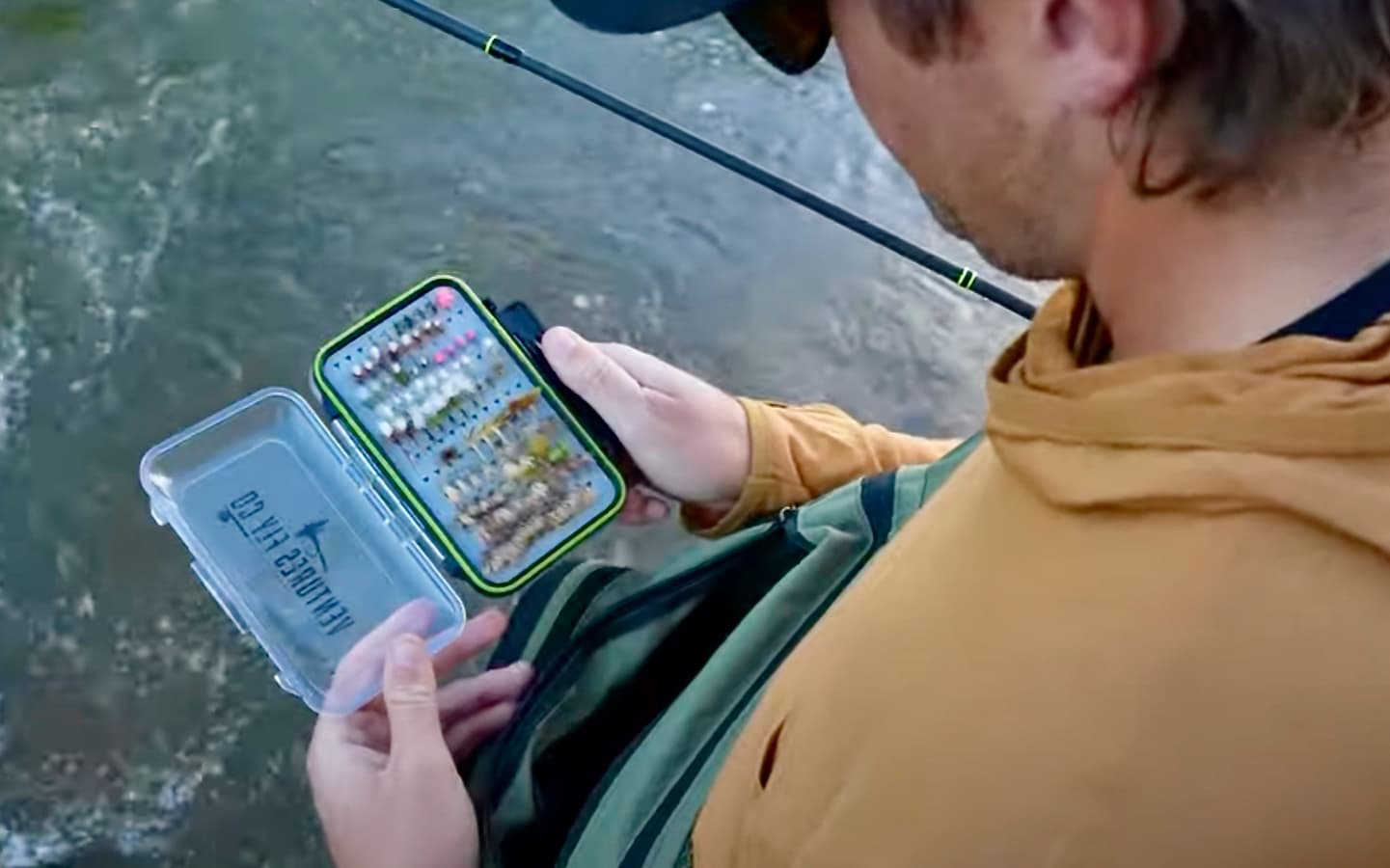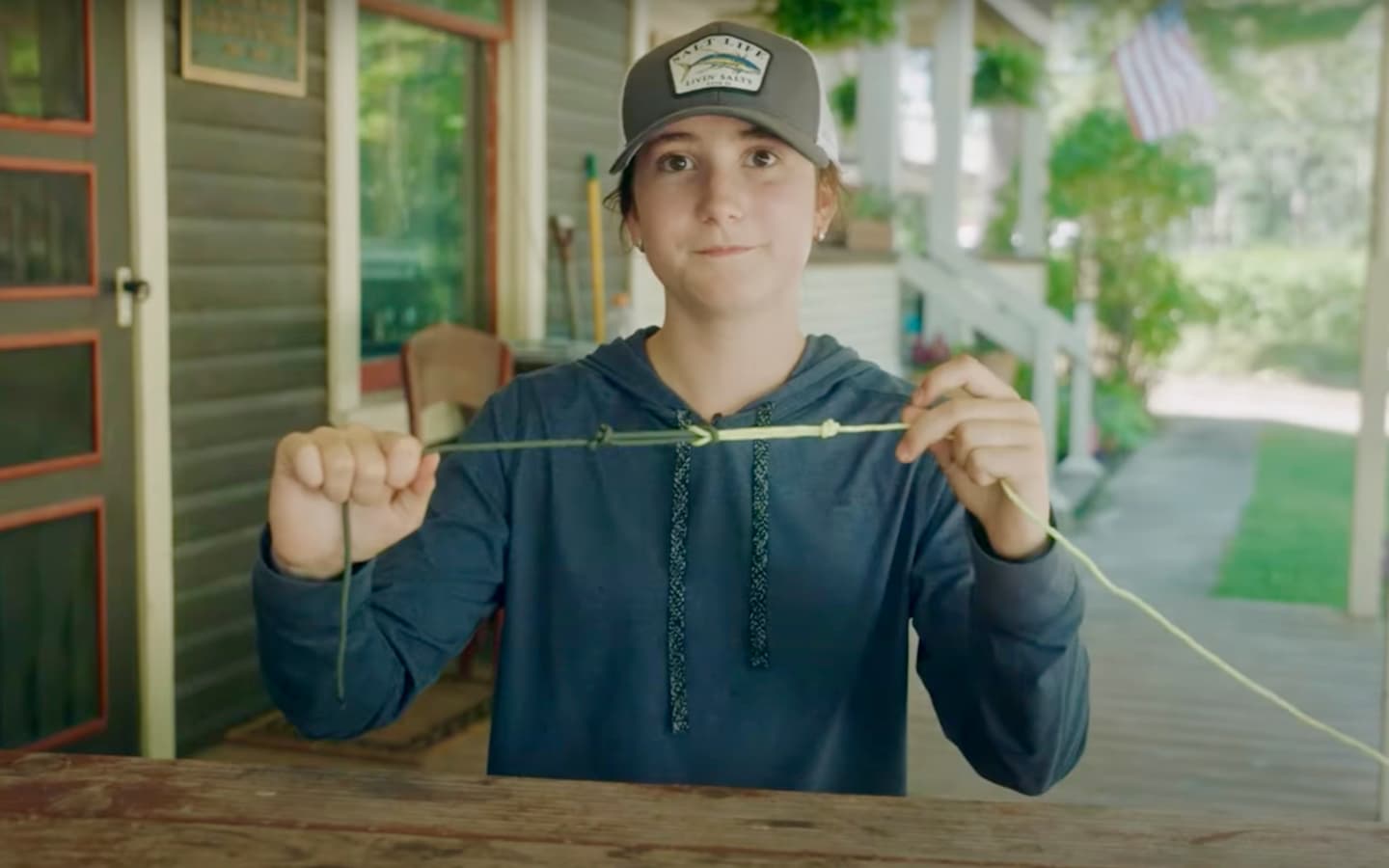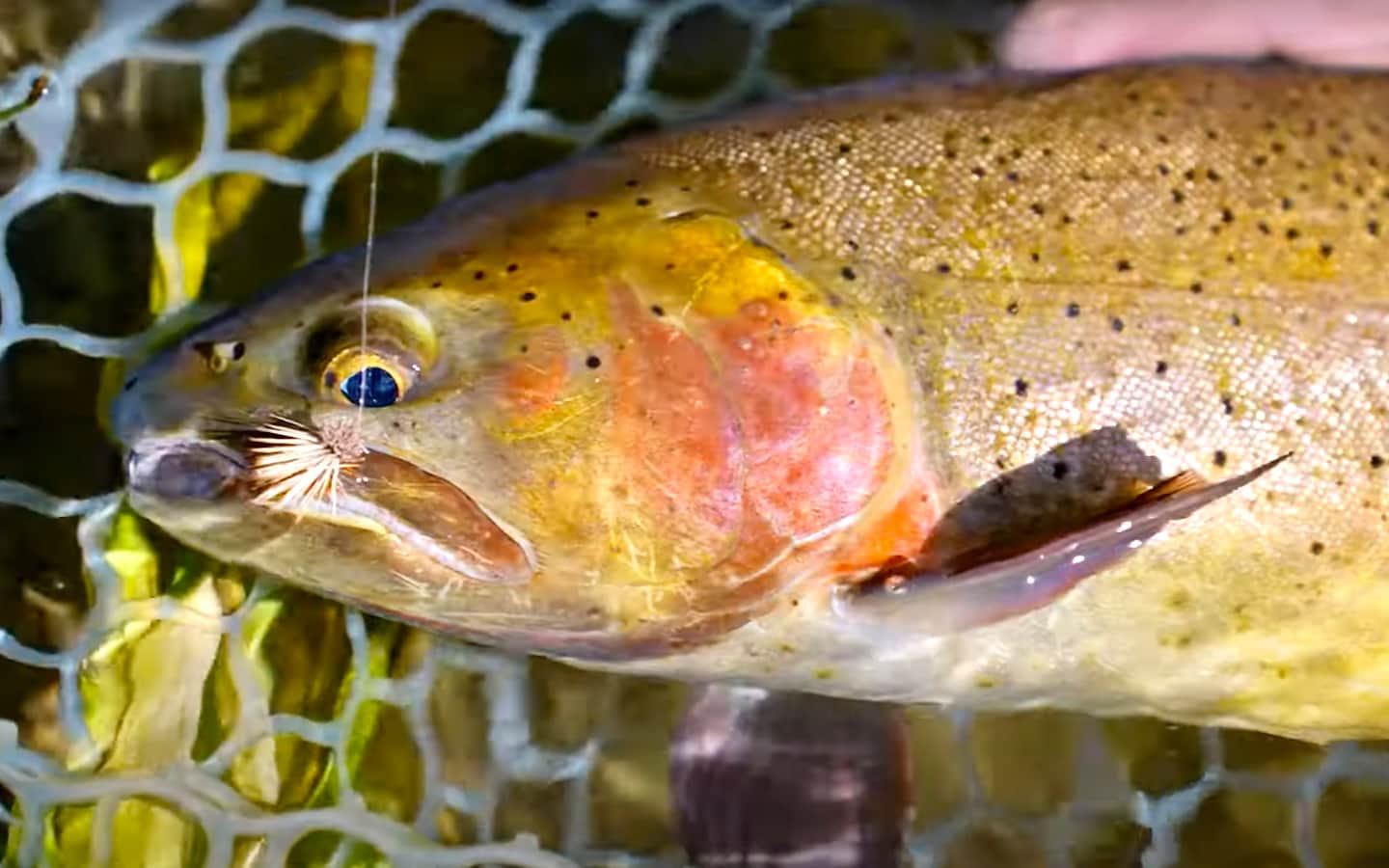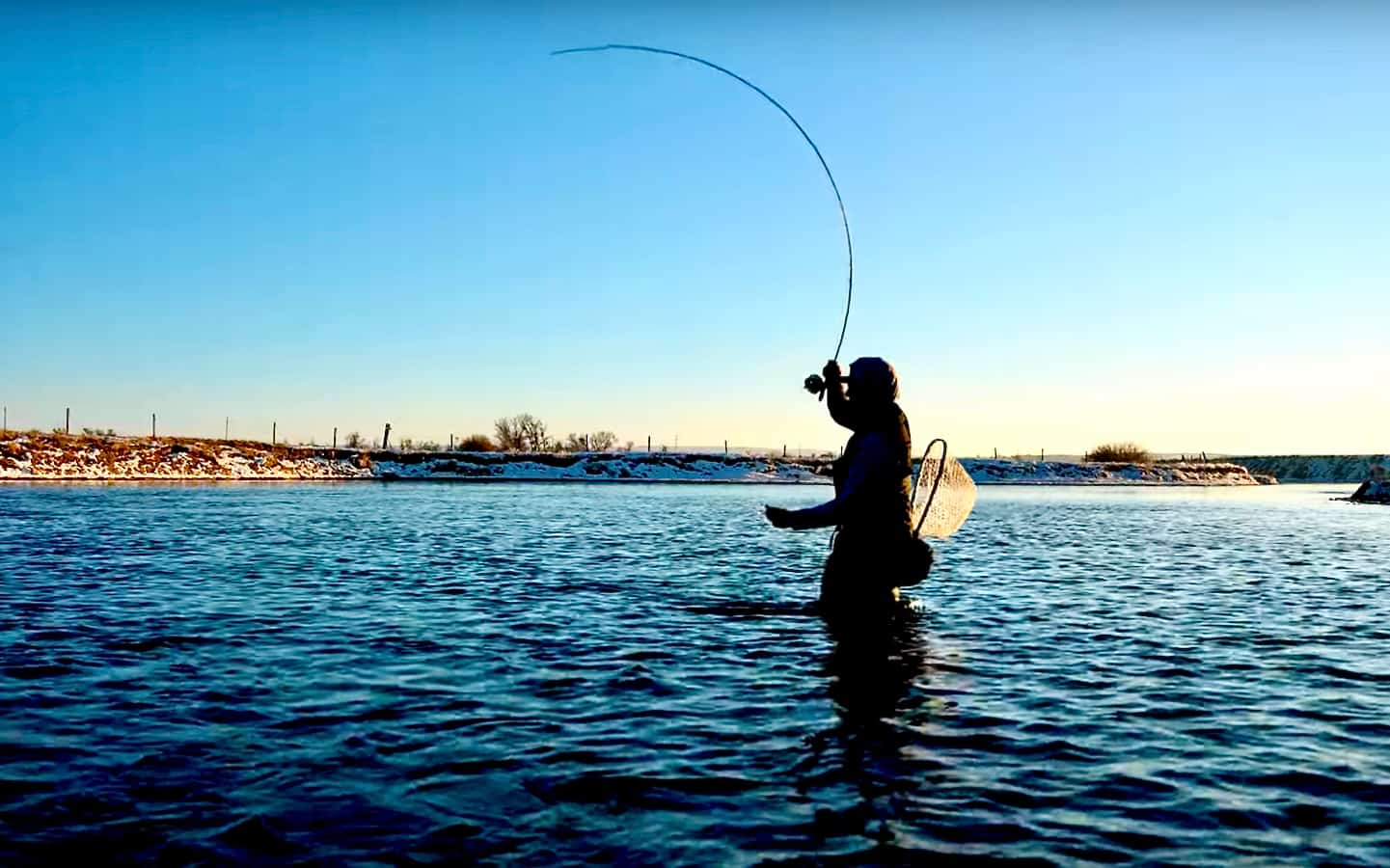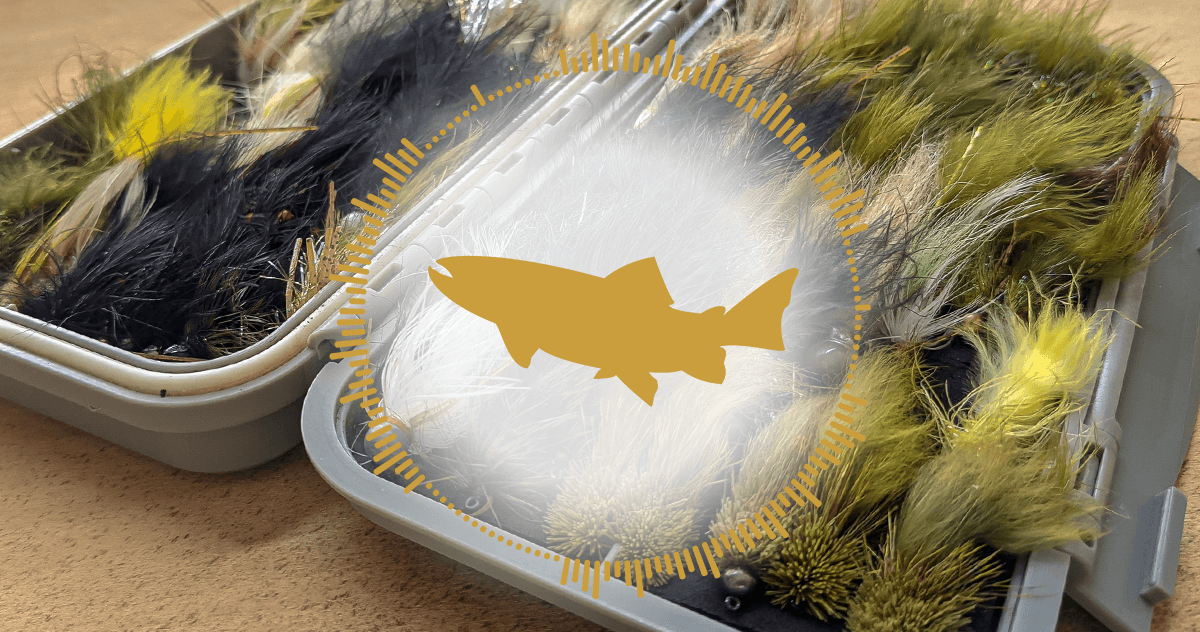How to Tie a Speedy Sparkle Purple Haze
Producer: Tim Flagler
On a recent trip to Montana, a guide had me fishing a Purple Haze with a sparkly body and it worked exceptionally well. This is my take on the pattern with a special nod to ease and speed of tying. At this point you more traditional tiers may want to avert your eyes and gird your loins.
To begin, I’m going to use a Lightning Strike DF1 dry fly hook in size 14. After getting the hook firmly secured in the jaws of my tying vise, I load a bobbin with a spool of black UTC 70 Denier. Get your thread started on the hook shank leaving a little bit of space behind the eye and take ten or so wraps rearward before snipping off the tag.
Rather than using a mix of brown and grizzly hackle fibers for the tail, I speed things up by instead, using a dozen or so stiff, straight Coq de Leon fibers which I strip free from the stem while keeping their tips aligned. Measure the fibers to form a tail a hook shank in length then transfer that measurement rearward to the start of the bend. Begin taking thread wraps to secure the fibers on top of the hook shank. Holding the fibers up at a slight angle while you wrap will help them to land on top of the hook as opposed to down either side. When you’re done, take thread wraps forward to just behind the butt ends and snip them off close. Make sure your thread is positioned about an eye-length and a half behind the back edge of the hook eye. This will be the location of the wing post.
To create the post, snip an ample clump of white calf body hair free from the hide. Don’t be shy with the amount. The clump may look fairly large, but a whole lot of it will be underfur or shorter hairs that need to be stripped out from the clump’s butt end. With the clump cleaned, place it tips first into a small hair stacker and give it a real good stacking. The super-fine hair can make this somewhat difficult so give it a few more taps than normal. Using your right hand, pull the aligned tips free from the stacker and pass the clump to your left hand. Measure to form a wing post a hook shank in length then transfer that measurement forward to the location of your tying thread. Make two loose collecting wraps around the clump and hook, then squeeze tight with your fingertips as you pull down on your tying thread. Keep squeezing with your fingertips as you take wraps rearward until the clump no longer wants to spin around the hook shank. You can then reach in with your tying scissors and snip the excess butt ends off close – hopefully, doing a better job than I did here.
Continue taking thread wraps over top of the snipped-off butt ends then back forward to the base of the wing post. Pull the wing post up and jam a few thread wraps in at its base to prop it up a bit. Carefully take a wrap or two of tying thread around the clump of hair to corral it and end with your tying thread behind the post.
I’m going to use Solarez Bone Dry, a very thin UV cure resin to help stiffen the base of the post. The smallest amount is all you need. Apply the resin just to the base of the post and let it sink in for a few seconds. After making sure the wing is close to vertical, pick up your UV torch and give the resin an ample shot of UV light to cure and harden it. This doesn’t take long. Relocate your tying thread to in front of the post but leave just a little bit of room behind the hook eye.
To save some time once again, I’m going to use a single barred ginger hackle feather as opposed to a mix of brown and grizzly. It’s a good idea to measure the hackle before pulling a feather from the cape. I like parachute hackles on the smaller side so choose a feather with barbules that are slightly undersized for the hook being used. Feathers from this particular cape work great for this pattern because of their striking coloration, which includes white, black and brown barring. With the shiny side of the feather facing you, strip off any fibers that have a good bit of web at their bases then strip a dozen or so more fibers from the top edge of the stem. Snip the butt end off leaving about a 1/4 inch of bare stem. With the shiny side of the feather facing up, lay the stem against the near side of the hook, behind the eye and give your bobbin a hardy, counterclockwise spin to uncord the tying thread. This will cause it to jump rearward during the first wrap and catch the very end of the hackle stem. Continue binding the stem to the hook shank back to the base of the post then pull the feather up to vertical and take wraps down the body of the fly all the way to about the hook point.
Pull down on your bobbin to expose roughly five inches of tying thread. Tease a small amount of purple UV Ice Dub from the packet and begin creating a thin, 4” long dubbing noodle on your tying thread. Dubbing with Ice Dub can be a little tricky. Just take your time and use lots of finger pressure. Start taking wraps with the noodle so the dubbing begins right at the base of the tail. Give your bobbin a clockwise spin which will help to tighten up the noodle a bit. Make touching wraps with the noodle to build up a slender body on the fly then continue taking wraps in front of the wing post. Ideally, you want to end with bare thread right at the back edge of the hook eye. Make sure to give your bobbin a good counterclockwise spin to uncord the thread or you’ll likely to end up with a snarl when you go to whip finish. Get hold of your whip finish tool and use it to complete a 4 or 5 turn whip finish, seat the knot well and snip or cut your tying thread free.
Well what about the hackle feather you say? Here’s the part that will make you purists cringe. Loosen the lid of the ultra thin UV resin you used before so it’s ready for one-handed use. Get hold of the feather and start making touching clockwise wraps with it on the wing post, 6-8 should be plenty. While maintaining an ample amount of pull on the feather with your left hand, get hold of the UV applicator with your right. Make sure there’s very little resin on it. Place a small drop of resin at the intersection of the hackle feather and the wing post and let it sink in, down through the hackle wraps and the calf body hair. Give the area a thorough bath of UV light to cure the resin and effectively weld the wrapped hackle to the wing post.
Those of you worried about the UV resin adding excess weight, should consider how many thread wraps it would take to end up with this same result. Once the UV resin is set, snip the excess hackle tip off close.
Other than ease and speed, one of the reasons I like this method so much is how clean of a fly it produces; virtually no extra lumps, bumps, thread wraps or errant trapped fibers. And it’s super durable.
How to Tie a Son of Sexy Walt's
How to Tie a Spent Early Smoky-Winged Sedge

